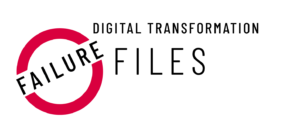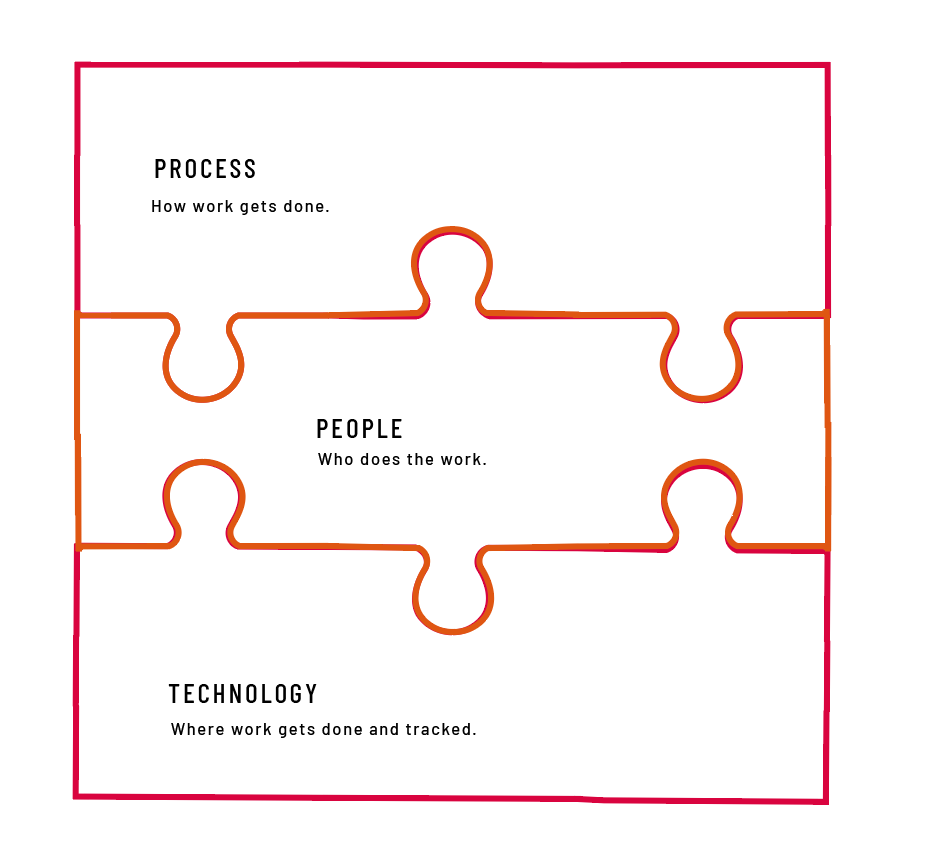The Failure Files: Tooling Driven Business Process
Part 1: The Risk of Leaving People Out of Your Digital Transformation
Check out our infographic on “The Top 6 Reasons Digital Transformations Fail”
“We bought Jira, why aren’t we going faster?”
“I got on the Cloud, why aren’t we seeing cost savings?”
“I bought Aha!, why are we not meeting product release deadlines?”
Have you ever tried to fit a square peg into a round hole? If you are trying to transform your business with tooling driven processes, deficient of a people change strategy, that is exactly what you are doing.
What Can Go Wrong
It is natural to conform business processes to technology because customization, adoption and automation are difficult feats for teams already managing “business as usual”. However, neglecting a unified transformation strategy combining process, technology, and people at every level causes Friction among employees, who have to conform to new ways of work and take extra steps to get things done. Teams may also experience loss of productivity, struggle with usage, bottlenecks and inefficiency, commonly resulting in high turnover. Investments of time and money are often wasted, as adoption initiatives fail and tools go unused.
People, Process, and Tech. One is More Critical Than the Rest.
If people are not at the core of the way your organization does work, you might need a new transformation strategy. We can set up complex processes and employ the top of the line technology, but these won’t drive outcomes on their own. People do. Our team members, at every level of the organization, are the glue that brings together the processes and the tools to get stuff done. Interestingly, we find that people and change strategy are the most frequently overlooked “initiatives” in a digital transformation.
When we allow a people-centric strategy to run through the transformation, we remove the largest blocker to successful outcomes. Different groups at different levels need to help define the processes and tools for two key reasons:
- They know what will work and what won’t better than anyone else
- They will buy into the change and feel like they have a say. When team members feel empowered and educated, productivity and innovation soar, while the opposite is true if they are not engaged.
The Right Way to Implement a Transformation Strategy
Adopting a new piece of technology should be an organizational strategic initiative that requires adequate planning and allocation of resources. The purpose of implementing a tool is to support the process and enable teams to work faster and more efficiently. That being said, people must remain in the driver’s seat and the process must guide implementation every step of the way.
So who/what should be in the driver’s seat for your digital transformation?
Answer: People are the “glue” that bind process and technology and are the most critical to transformation, Process leads, and Technology supports both for faster delivery.
6 Top Tips to Successful Transformation
-
- Zoom out to a strategic level
- Get executive leadership to back the initiative and lead the charge
- Hold town hall meetings, skip-level meetings and AMA to elevate the voice of the organization upward.
- Utilize employee surveys to achieve this as well
- Involve the right stakeholders (spanning business levels) who understand how the business works
- From bottom up, it is important for stakeholders to participate in key meetings and convey ideas upwards to leadership
- Limit your ultimate decision making stakeholders to 4-6 people. A group of 20-30 will never make decisions.
- Start with people/teams/groups that are open to or interested in change
- Set expectations for change to occur – make known that iteration and improvements will happen
- Set up a system to capture the right metrics to measure success
Driving a successful business transformation requires a trifecta of tech, process and most importantly people from different level of the organization who share the common vision, have ‘skin in the game’ and are open to new and improved way of doing things.




